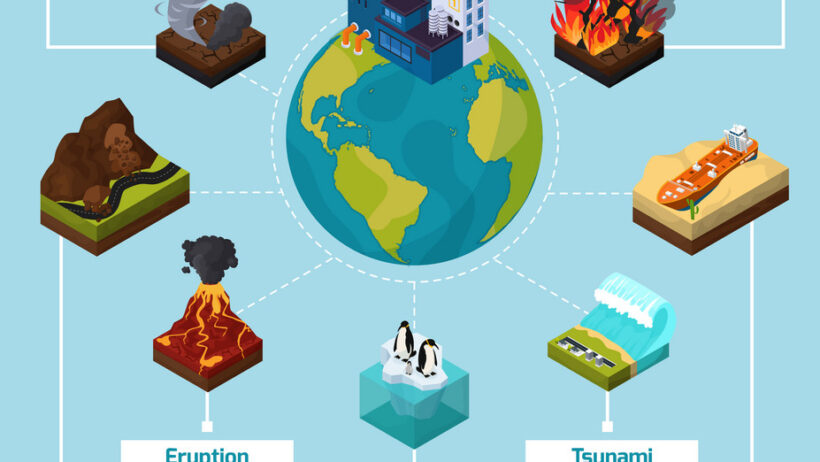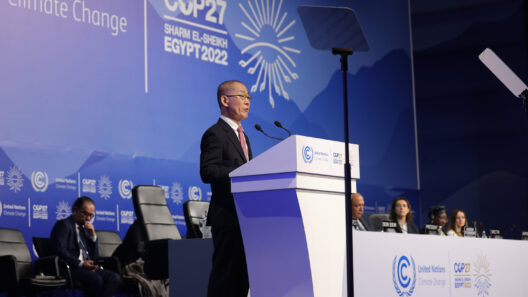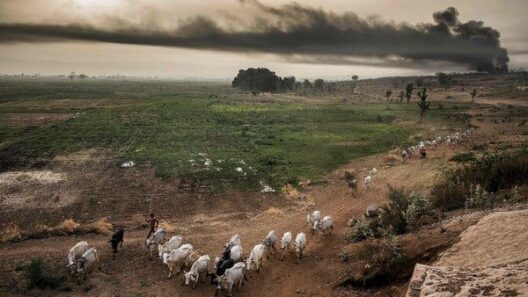The phenomenon of global warming and climate change extends far beyond mere increases in temperature. Think of our planet as a finely-tuned orchestra. Each element—air, water, soil, flora, and fauna—plays a distinct yet interconnected role, harmonizing in a fragile balance. When one instrument falters, the entire symphony can be thrown into disarray. This disruption reverberates through the very fabric of our existence, revealing consequences that are as treacherous as they are intertwined.
As global temperatures rise, so too do the ramifications of climate change, reaching into various sectors and domains of life. Starting with the most conspicuous effect—the increase in heat—let’s navigate through the less visible waves of impact that ripple outward from this central phenomenon.
To begin with, shifting weather patterns have become our grim companions. Droughts have become more severe and prolonged, reducing agricultural yields and straining water supplies. The fertile crescent, once the breadbasket of the world, now faces the specter of aridity as rainfall becomes less predictable. This not only jeopardizes food security but perpetuates a cycle of poverty and instability, particularly in developing nations, where reliance on agriculture is paramount.
Moreover, heavy rainfall and flooding have become more prevalent, transforming landscapes into torrents that erode the very soil that sustains them. Coastal regions are particularly vulnerable. Rising sea levels, a product of melting ice caps and thermal expansion of seawater, forecast a cataclysmic reshaping of our coastlines. As saltwater encroaches on freshwater aquifers, ecosystems that have thrived for centuries face existential threats. It becomes clear that climate change is not merely an environmental issue; it is an imminent humanitarian crisis.
But the ramifications extend even further into the biodiversity tapestry of our planet. Species that once thrived in temperate climates find their habitats shifting beneath them, like a stage where the scenery is incessantly rearranged. Some are forced to migrate to higher elevations or latitudes in search of suitable environments, while others languish, unable to adapt swiftly enough to the rapid changes. The extinction rates are soaring, and the loss of biodiversity disrupts ecosystems, affecting services we often take for granted—like pollination, water purification, and disease regulation. It is akin to pulling a thread from a meticulously woven tapestry; soon enough, the entire fabric starts to unravel.
Additionally, the plight of our oceans cannot be overstated. The relentless absorption of atmospheric carbon dioxide has led to ocean acidification, detrimental to marine life, particularly organisms with calcium carbonate structures, such as corals and shellfish. Coral reefs, the vibrant ecosystems teeming with life, are dwindling at alarming rates due to bleaching events triggered by elevated water temperatures. Their decline signifies a harbinger for fish populations, human livelihoods, and economies dependent on these marine sanctuaries. Here, we witness a cascade effect—a deft illustration of how interconnected and delicate our environmental systems remain.
Alongside ecological ramifications, the human psyche stands at the precipice of an emotional and psychological strain. As communities experience the blunt force of climate change—be it through heat waves, hurricanes, or floods—the burden on mental health escalates. Feelings of helplessness, anxiety, and grief proliferate, as individuals confront an uncertain future. The phenomenon of “climate anxiety” has emerged, leaving many grappling with existential dread. This emotional toll on society extends its reach, amplifying stressors that already burden underserved populations, further complicating pathways to healing and resilience.
A glaring yet frequently overlooked consequence of climate change is its contribution to social and political strife. As resources dwindle and competition intensifies over water, arable land, and disaster relief, the stage is set for conflict. The Arab Spring is often cited as one such instance, where severe drought exacerbated tensions, contributing to widespread unrest. Climate grievances can produce fertile ground for political upheaval. Consequently, addressing climate change is not solely an environmental endeavor—it is intrinsically linked to global peace and security. Societies that can adapt to and mitigate climate impacts will dictate the geopolitical discourse of the future.
Education and awareness serve as the linchpins in our collective response to climate change. Empowering individuals with knowledge creates a ripple effect, enabling communities to implement sustainable practices and advocate for policy changes. Engaging in dialogues about the interconnectedness of our actions fosters a sense of stewardship over the planet. This shared responsibility can be a unifying force, transcending borders and ideologies.
Furthermore, solutions rooted in innovation and sustainability can redirect the trajectory of our impact on the planet. Transitioning to renewable energy sources, such as solar and wind, holds immense potential for decarbonizing our economies. Similarly, regenerative agricultural practices can enhance soil health and biodiversity, serving as a beacon of hope in our quest for a sustainable existence. In the words of an old proverb, “Where there’s a will, there’s a way.”
To surmise, the implications of global warming and climate change permeate every aspect of life on Earth, from ecological integrity to human welfare. Addressing this multifaceted crisis demands a concerted effort, transcending simplistic views of heat waves and focusing on the intricate web of consequences that span generations and geographies. The challenge ahead is monumental, yet within this calamity lies the opportunity to chart a course toward a more resilient and harmonious existence with our planet. Each action, no matter how small, can create a ripple of change, steering our global symphony back toward a harmonious coexistence with nature.







